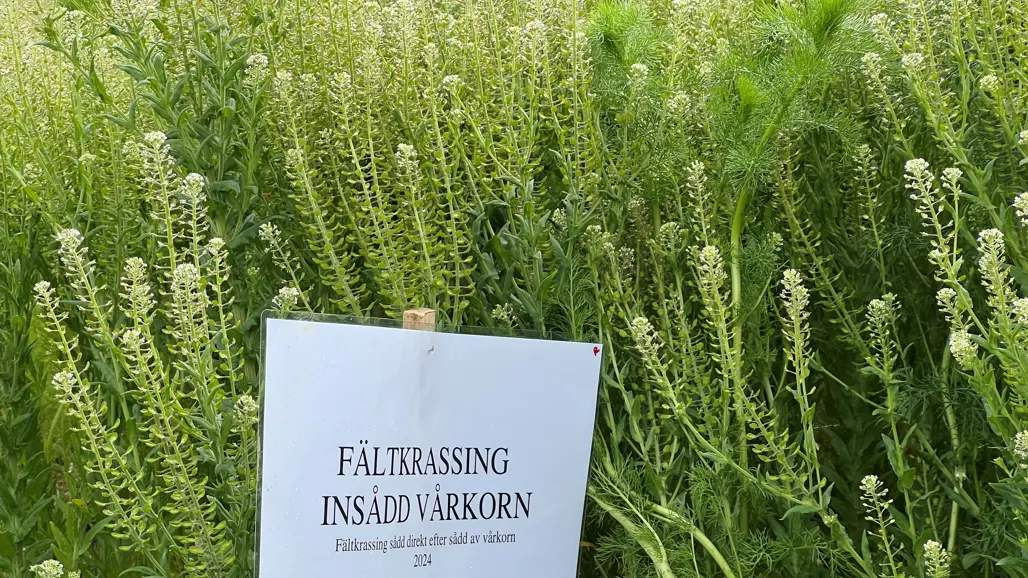
Sökes: Frö från fältkrassingen
Hör upp alla naturintresserade och vetenskapsälskare! Delta i vårt spännande medborgarforskningsprojekt och bidra till att utveckla nya grödor.
Här är en enkel guide för hur du samlar in och skickar mogna fröer av fältkrassingen (Lepidium campestre) för att hjälpa oss i vår forskning:
1. Lokalisera fältkrassingplantor: Använd dina eller andras observationer på botanikforum såsom www.inaturalist.org av fältkrassing/Lepidium campestre för att hitta växten i ditt närområde. Alternativt leta själv med hjälp av bildstöd här nedan, fältkrassingen trivs ofta på övergivna banvallar (vid tågräls). Beroende på geografisk plats bör fröerna börja mogna mellan juni-augusti.
2. Samla mogna frön: Fröerna är redo för skörd när skidorna som innehåller fröna blir torra och gulaktiga. Helst ska stammen också vara gul, men ibland kan fröna trilla ut innan det händer.
3. Insamling: När du har hittat lämpliga intakta skidor, placera fröerna i en papperspåse eller ett kaffefilter.
4. Förpackning: Tejpa papperspåsen eller filtret noggrant för att hålla fröerna inneslutna.
5. Adressering: Förbered ett kuvert, lägg i fröerna och dina kontaktuppgifter (adress och e-post) och skriv följande adress:
Cecilia Hammenhag
Sveriges Lantbruksuniversitet
Institutionen för växtförädling
Växtskyddsvägen 1
234 56 Alnarp
Sverige
6. Skicka: Sätt ett frimärke på kuvertet och skicka det till oss, alternativt kontakta oss på cecilia.hammenhag@slu.se med dina uppgifter så skickar vi ett förfrankerat kuvert åt dig.